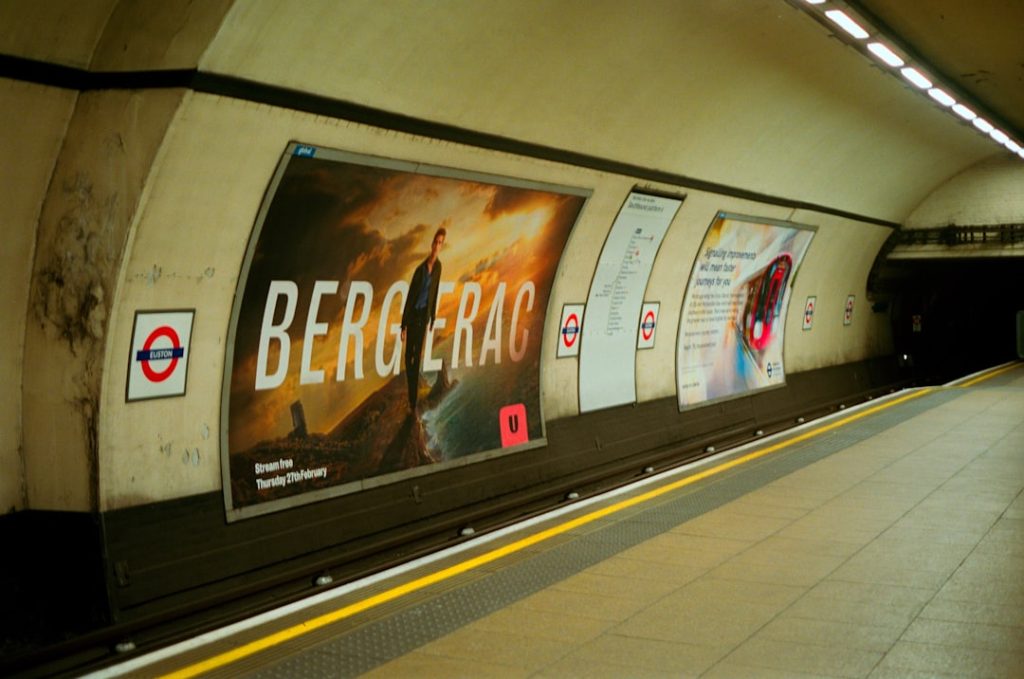In the realm of automotive advertising, visuals serve as the primary conduit through which brands communicate their identity and values. The automotive industry is inherently visual; the allure of a sleek car design, the gleam of polished metal, and the dynamic motion of vehicles on the road create an emotional connection that words alone often fail to achieve. High-quality imagery and video content can evoke feelings of excitement, freedom, and aspiration, making them indispensable tools in crafting effective advertisements.
For instance, a well-composed shot of a car navigating a winding mountain road can not only showcase the vehicle’s performance but also inspire viewers to envision themselves in that exhilarating scenario. Moreover, the strategic use of color, lighting, and composition can significantly enhance the appeal of automotive ads. Brands like BMW and Audi have mastered the art of visual storytelling, employing dramatic lighting and striking landscapes to highlight their vehicles’ features.
The choice of colors can also convey specific emotions; for example, a vibrant red can evoke passion and energy, while a sleek black may suggest sophistication and luxury. By carefully curating these visual elements, automotive advertisers can create a compelling narrative that resonates with their target audience, ultimately driving engagement and sales.
Key Takeaways
- Compelling visuals in automotive ads can capture attention and create a lasting impression on potential customers.
- Crafting irresistible offers and promotions can entice consumers to consider a purchase and drive sales.
- Leveraging the latest technology in automotive advertising, such as virtual reality or augmented reality, can provide an immersive and engaging experience for consumers.
- Targeted messaging and audience segmentation are crucial for reaching the right consumers with the right message at the right time.
- Creating a memorable brand image through automotive ads can help build brand loyalty and recognition among consumers.
Crafting Irresistible Offers and Promotions
In an industry characterized by fierce competition, crafting irresistible offers and promotions is crucial for capturing consumer interest and driving sales. Automotive brands often employ a variety of promotional strategies, such as limited-time discounts, financing options, and trade-in bonuses, to entice potential buyers. For example, a dealership might offer a significant rebate on a new model during a holiday weekend, creating a sense of urgency that encourages consumers to act quickly.
These promotions not only attract attention but also provide tangible incentives that can sway purchasing decisions. Additionally, the effectiveness of an offer can be amplified through personalization. By leveraging data analytics, automotive marketers can tailor promotions to specific segments of their audience based on factors such as demographics, purchasing history, and online behavior.
For instance, a brand might target young professionals with financing options that cater to their budget constraints while offering luxury features that appeal to their desire for status. This level of customization not only enhances the relevance of the promotion but also fosters a deeper connection between the brand and its customers.
Leveraging the Latest Technology in Automotive Advertising

The automotive advertising landscape is rapidly evolving, driven by advancements in technology that enable brands to reach consumers in innovative ways. One of the most significant developments has been the rise of digital advertising platforms, which allow for more targeted and interactive campaigns. For instance, programmatic advertising enables brands to automate the buying process and deliver personalized ads to specific audiences based on real-time data.
This level of precision ensures that automotive ads are seen by those most likely to convert, maximizing return on investment. Furthermore, technologies such as augmented reality (AR) and virtual reality (VR) are transforming how consumers experience automotive advertising. Brands like Toyota have utilized AR applications that allow potential buyers to visualize vehicles in their own environment or explore features in an immersive way.
Similarly, VR test drives provide an engaging alternative to traditional showroom experiences, allowing consumers to experience a vehicle’s performance without leaving their homes. By embracing these cutting-edge technologies, automotive advertisers can create memorable experiences that not only capture attention but also facilitate informed purchasing decisions.
The Importance of Targeted Messaging and Audience Segmentation
| Metrics | Importance |
|---|---|
| Increased Engagement | Targeted messaging and audience segmentation can lead to higher engagement rates as the content is tailored to the specific interests and needs of the audience. |
| Improved Conversion Rates | By delivering personalized messages to the right audience segments, businesses can see an increase in conversion rates as the content resonates more with the recipients. |
| Enhanced Brand Loyalty | When customers receive messages that are relevant to them, they are more likely to feel a stronger connection to the brand, leading to increased loyalty and repeat purchases. |
| Cost-Effective Marketing | Targeted messaging and audience segmentation can help businesses save on marketing costs by ensuring that their messages are reaching the most receptive audience, reducing wasted resources. |
In automotive advertising, understanding the target audience is paramount for crafting effective messaging that resonates with potential buyers. Audience segmentation involves dividing the broader market into smaller groups based on shared characteristics such as age, income level, lifestyle preferences, and geographic location. This approach allows brands to tailor their messaging to address the specific needs and desires of each segment.
For example, a luxury car brand may focus its advertising efforts on affluent consumers who value prestige and exclusivity, while a budget-friendly brand might emphasize affordability and practicality. Targeted messaging goes beyond mere demographics; it also encompasses psychographics—understanding consumers’ motivations, values, and interests. By tapping into these deeper insights, automotive advertisers can create campaigns that speak directly to their audience’s aspirations.
For instance, an ad campaign for an electric vehicle might highlight environmental sustainability and innovation to appeal to eco-conscious consumers. In contrast, a campaign for a rugged SUV could focus on adventure and outdoor exploration to attract thrill-seekers. This level of specificity not only enhances engagement but also increases the likelihood of conversion by presenting a compelling narrative that aligns with consumer values.
Creating a Memorable Brand Image through Automotive Ads
A strong brand image is essential for automotive companies seeking to differentiate themselves in a crowded marketplace. Automotive ads play a pivotal role in shaping public perception by conveying the brand’s core values and personality. Consistency in messaging across various platforms—whether through television commercials, print ads, or social media—reinforces brand identity and fosters recognition among consumers.
For instance, brands like Mercedes-Benz have cultivated an image of luxury and sophistication through carefully crafted advertisements that emphasize quality craftsmanship and innovative technology. Moreover, storytelling is a powerful tool in creating a memorable brand image. By weaving narratives that resonate with consumers on an emotional level, automotive advertisers can forge lasting connections with their audience.
For example, Subaru’s “Love” campaign focuses on themes of family and adventure, showcasing how their vehicles enhance life experiences. This approach not only highlights the practicality of their cars but also positions Subaru as a brand that understands and values its customers’ lifestyles. By consistently delivering messages that align with their brand ethos, automotive companies can establish a strong presence in consumers’ minds.
Harnessing the Influence of Social Media in Automotive Advertising

Social media has revolutionized the way automotive brands engage with consumers, providing platforms for direct interaction and feedback. With billions of users worldwide, platforms like Instagram, Facebook, and Twitter offer unparalleled opportunities for automotive advertisers to reach diverse audiences. Social media campaigns can be tailored to specific demographics and interests, allowing brands to showcase their vehicles in creative ways that resonate with users’ lifestyles.
For instance, Instagram’s visual-centric format is ideal for sharing stunning images and videos of cars in action, while Facebook allows for more detailed storytelling through posts and ads. Influencer marketing has also emerged as a powerful strategy within automotive advertising on social media. Collaborating with influencers who align with the brand’s values can amplify reach and credibility among target audiences.
For example, an automotive brand might partner with popular automotive YouTubers or Instagram personalities who have established trust with their followers. These influencers can provide authentic reviews or showcase vehicles in real-world scenarios, making the brand more relatable and appealing to potential buyers. By harnessing the influence of social media effectively, automotive advertisers can create buzz around their products and foster community engagement.
Maximizing the Impact of Video Content in Automotive Ads
Video content has become an essential component of automotive advertising strategies due to its ability to convey complex messages quickly and engagingly. With platforms like YouTube serving as primary sources for video consumption, automotive brands have recognized the importance of creating high-quality video ads that capture attention within seconds. A well-produced video can showcase a vehicle’s features in action—demonstrating performance capabilities or highlighting innovative technology—while also telling a story that resonates with viewers emotionally.
Moreover, live streaming has gained traction as an effective way for automotive brands to engage with audiences in real-time. Events such as vehicle launches or behind-the-scenes looks at production processes can be streamed live on social media platforms, allowing consumers to feel connected to the brand in an authentic way. For instance, Tesla has successfully utilized live streaming during product unveilings to generate excitement and anticipation among fans and potential buyers alike.
By maximizing the impact of video content through creative storytelling and real-time engagement, automotive advertisers can enhance brand visibility and drive consumer interest.
Measuring and Analyzing the Success of Automotive Advertising Campaigns
To ensure the effectiveness of automotive advertising efforts, it is crucial for brands to implement robust measurement and analysis strategies. Key performance indicators (KPIs) such as click-through rates (CTR), conversion rates, return on ad spend (ROAS), and customer acquisition costs provide valuable insights into campaign performance. By analyzing these metrics, automotive marketers can identify which strategies are yielding positive results and which areas require optimization.
Additionally, utilizing advanced analytics tools allows brands to track consumer behavior across various touchpoints—from initial awareness through to purchase decision-making. This comprehensive understanding enables marketers to refine their targeting strategies and messaging based on real-time data insights. For example, if data reveals that certain demographics respond more favorably to specific types of promotions or messaging styles, brands can adjust their campaigns accordingly to maximize impact.
By continuously measuring and analyzing campaign success, automotive advertisers can make informed decisions that drive growth and enhance overall marketing effectiveness.



